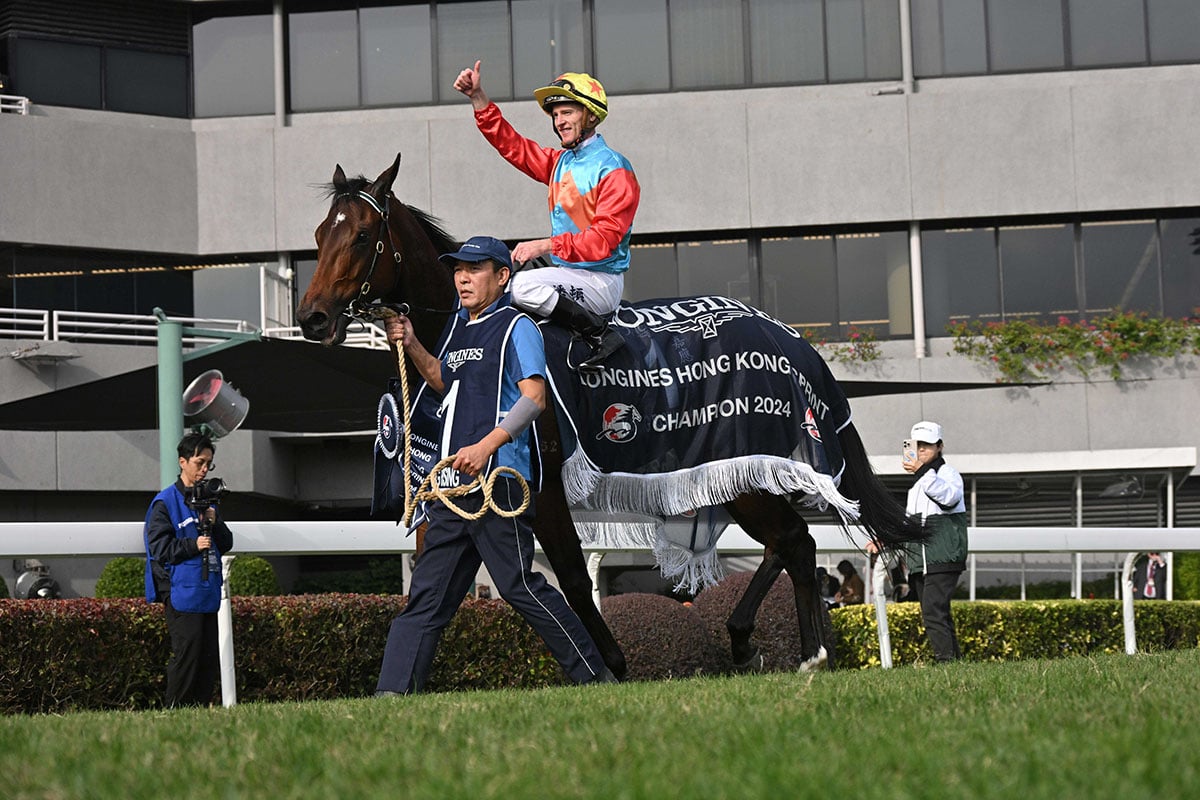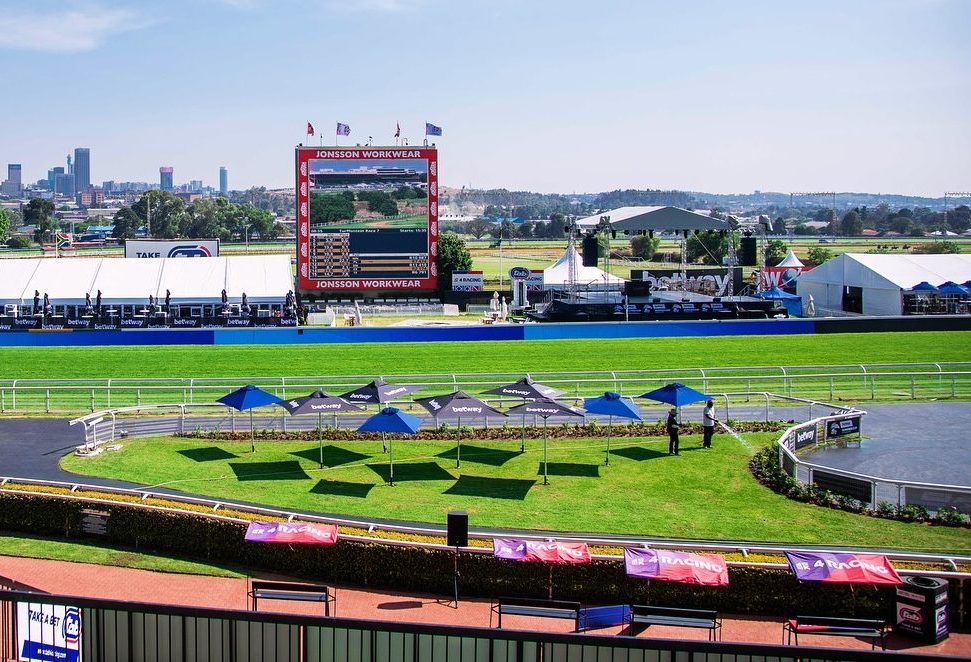How is that even possible? To have the Speed to run this fast for 1000m and then the Stamina to keep going and even accelerating for another 1000m to stop the clock at 1 min 55.2 sec for 2000m.
Robin Bruss writes that when the world’s current best racehorse EQUINOX (JPN) won the Tenno Sho (Autumn) Gr.1 over 2000m on turf in Tokyo on 29 October to win his fifth consecutive Group 1 race, he smashed the track and world record by clocking 1 min 55,2 secs.
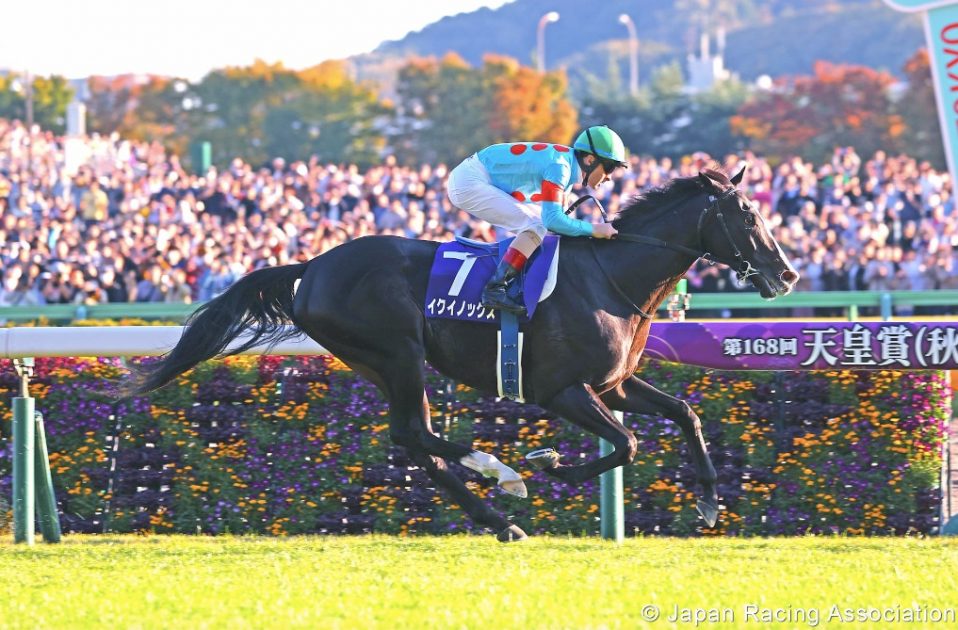
Equinox wins the Tenno Sho in record time (Pic- JRA)
To understand the context, Equinox ran 2,3 seconds faster than he did when he won the same race in 2022, and even then his 1 min 57,5 secs was hailed as a supremely fast time.
Secretariat holds the track record for the Kentucky Derby at 1 min 59,4 secs which has stood for 50 years.
The American 10 furlong record was set by Spectacular Bid 43 years ago and his 26 wins included 13 Gr.1 wins amongst them the Strub S. at Santa Anita in 1 min 57,8 secs.
Breaking down Equinox’s world record of 1 min 55.2 secs, each half would have been run in 57,6 secs. for 1000m., a fast time for a specialist sprinter, but then Equinox, in coming from 5 lengths off the pace, must have run the second 1000m in 56,6 seconds.
How is that even possible? To have the speed to run this fast for 1000m and then the stamina to keep going and even accelerating for another 1000m ?
“He is a versatile horse that can run from any position, stay calm during the race and make use of his speed at the finish” said jockey Christophe Lemaire. It’s not that he outstayed the others, it’s that he sprinted away from them.
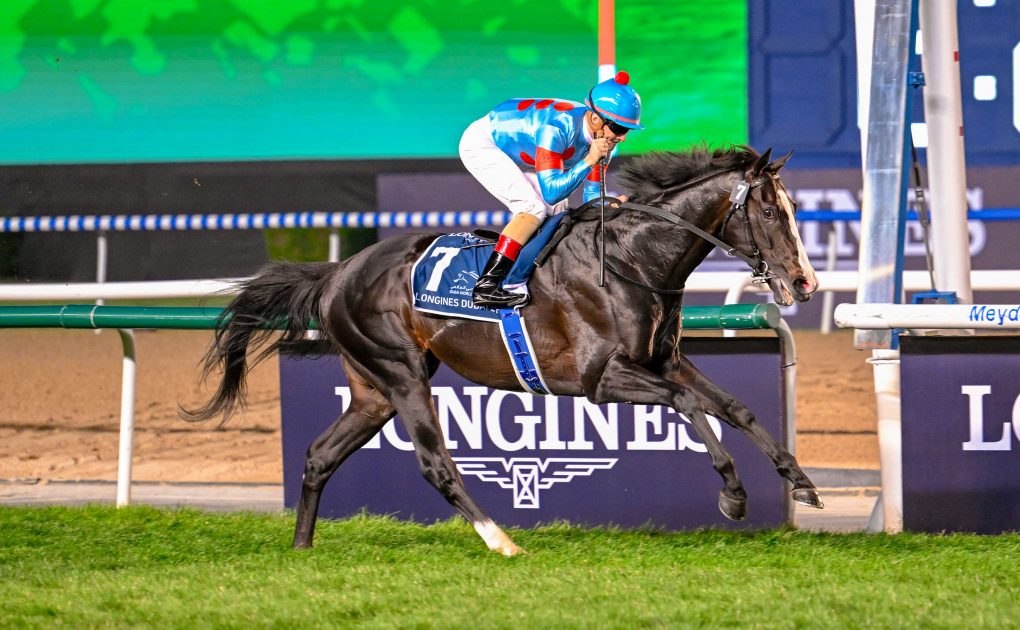
Equinox wins the Gr1 Dubai Sheema Classic (Pic – Chase Liebenberg)
This got me thinking about the blend of speed and stamina that breeders must plan in trying to produce not just good horses, but Great Horses.
It’s a common belief that you must retain speed, it’s the essential of all top class horses, the ability to accelerate. But how can you discard stamina?
In the modern era of commercial yearlings, stamina is increasingly unfashionable, and we see this trend in most countries, except for Japan. And there is little doubt that for Japan, stamina is paying global dividends at the winning post.
Not only do they have Equinox, the best racehorse in the world, but Japanese breds this year won the world’s richest race, the $20 million Saudi Cup over 1800m and the $12 million Dubai World Cup over 2000m, the second richest.
Equinox began his racing career unbeaten in two starts at 2 years, both over 1800m., then as a 3 year old, he was beaten a neck in the Japanese Derby over 2400m, before starting his 5x Group 1 winning streak, winning the Tenno Sho Gr.1 over 2000m and the Arima Kinnen Gr.1 over 2500m. In Dubai he won the $6 million Sheema Classic Gr.1 over 2400m in a canter leaving 7 other European Gr.1 winners in his wake to emerge as the no.1 horse in the world.
Returning home to Japan, he won another Gr.1 at 2200m and now this world record performance at 2000m in a masterful display of both speed AND stamina.
Equinox’s sire Kitasan Black was a Japanese bred champion runner by Black Kite, a Listed Stakes winning full brother to the 10x Champion Sire Deep Impact, both were by Kentucky Derby winner, Sunday Silence, the modern foundation sire of Japanese breeding.
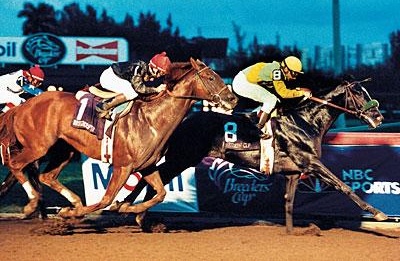
1989 Breeders Cup – Sunday Silence beats Easy Goer
Kitasan Black won 12 of his 20 starts, amongst them were five Group 1 wins, at 2000m., 2400m., 2500m., 3000m and 3200m. I daresay that in the current prejudice against stamina, if you had offered to stand him at stud in Europe, he would have been consigned as a National Hunt stallion, and in South Africa, he would have been lucky to get a mare at all.
The dam of Equinox was a Gr.3 winner at 2000m., and therefore had racing class. As we know, Graded races are 3% of all races and therefore if a filly can win a Graded Stakes, she automatically is better than 97% of all horses in training. Mating her to a Gr.1 winning stallion, puts the resulting progeny into what I would term, the ‘probability’ arena of being in the top 2% of the foal crop.
But a 2000m mare mated to a 3200m stallion ? What can you expect, where is the speed in the planned mating ? Would such a mating plan predicate a one paced stayer?
Equinox’s Gr.3 winning dam is by King Halo (JPN), a son of Arc (2400m) winner Dancing Brave.
The next dam is by Arc (2400m) Tony Bin, and 3rd dam is by dual Arc (2400m) winner Alleged. There are piles of stamina.
In searching for the speed in the pedigree, I found an interesting point.
KING HALO is the product of two superstars in his sire Dancing Brave and his dam Goodbye Halo. They won 10 Gr.1 races between them, including the Arc and the Kentucky Oaks respectively and were horses of the highest class, both had great acceleration and both were Gr.1 winners at 1600m and then extended that to 2400m.
King Halo, the son of these two Gr.1 champions, also became a Gr.1 winner in Japan, but the surprising part is that his Japanese Gr.1 win was recorded at 6 furlongs (1200m). So there is the line of speed, and not just a sprinter’s speed, he was genetically bred to also stay and actually also ran 4th in the Arima Kinen Gr.1 over 2500m in his final start. Speed AND Stamina.
The great Italian breeder Federico Tesio, breeder of unbeaten world champions Nearco and Ribot, noted this:
“To produce a great horse, one must be able to find amongst his ancestors, individuals which showed classic quality at one mile, 10 furlongs, 12 furlongs and 2 miles. Without a representative of one mile it will be difficult to produce a horse of outstanding quality, because he will be incapable of those bursts of nervous energy which are synonymous with speed.”
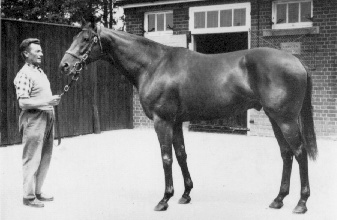
Ribot
The noteworthy part of this statement is that winning at one mile is one factor, it’s the winning at 10 furlongs, 12 furlongs and 2 miles, which he also favoured in breeding great horses. I suppose this might be considered a bygone era as Nearco was born in 1935 and Ribot 1952.
Nearco was never beaten in 14 starts, winning 7 times from 1000m to 1600m as a 2 year old. Then 7 more wins at 3 years including the Italian Derby (2400m) and the GP de Paris (3000m). The perfect horse, possessing speed AND stamina along with brilliant acceleration.
Ribot was never beaten in 16 starts from 1000m on his debut up to 3000m in the GP de Milano and in between he won the Arc twice and the King George VI and Queen Elizabeth S. all at 2400m. Another perfect horse, possessing speed AND stamina along with brilliant acceleration.
Lord Derby’s great breed shaping English stallion Hyperion won the New Stakes over 1000m at 2 years, the 1933 English Derby (2400m) at 3 and was 3rd in the Ascot Gold Cup at 4000m.
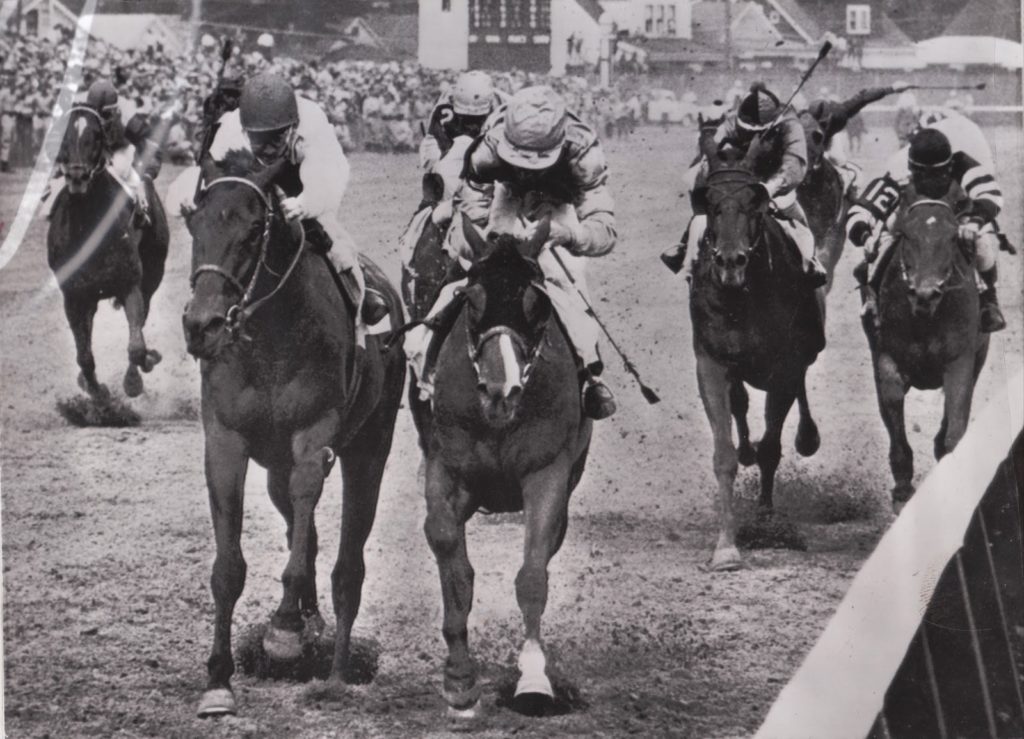
Northern Dancer holds on to win the 1964 Kentucky Derby
Northern Dancer, the Canadian bred who revolutionised world breeding, won 14 of his 18 starts, including 7 wins as a two year old starting at 6 furlongs and peaking in the 1964 Kentucky Derby at 10 furlongs in record time. Similarly the great Secretariat, who 16 wins began at 6 furlongs at two years and peaked with the Triple Crown, including the Belmont Stakes at 12 furlongs. Both had speed that they could carry into tests of stamina.
All of these great champions were sound and tough enough to win double digit numbers of races, were thoroughly tested in performance.
Stamina, if you think about it, brings together a range of characteristics which are so desirable in any racehorse. Staying horses clock up a lot of mileage in order to be fit for long distance racing and therefore must be sound and tough and durable. They race often and have grand constitutions and they also must have good cardio vascular systems, strong hearts and lungs.
These are desirable traits to pass on to progeny, whether you plan to breed sprinters, milers or stayers and vital if you want to breed a Champion that can do it all.
It is in this interplay between speed and stamina that greatness lies.
How often do we find that the greatest horses in South African racing also had the versatility of speed and stamina. Some quick examples spring to mind
Sea Cottage (1962) – 20 wins in 24 starts from 5 furlongs on his debut through to the Cape Derby at 12 furlongs.
Hawaii (1966) won 21 of his 28 starts from 800m on his debut in Johannesburg to 2400m when he won the Man O War Stakes in New York.
Horse Chestnut (1995) won his debut over 1000m and ran all distances up to the South African Derby over 2400m which he won by 10 lengths.
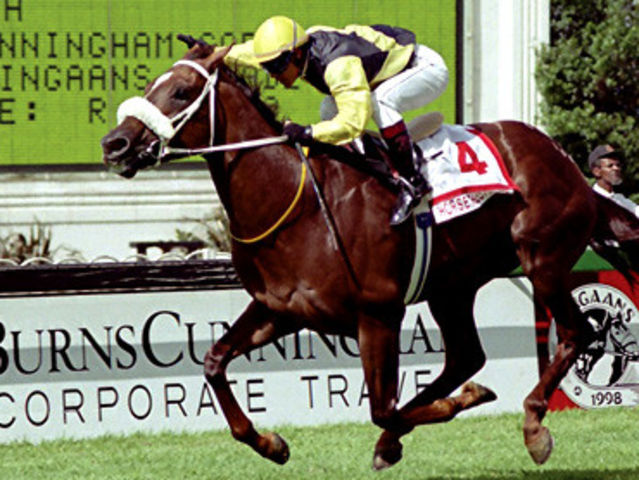
Horse Chestnut – the first Triple Crown hero
These are the greatest horses of South African racing, but it’s been a long time since we last saw their like, their class, their versatility, their durability, their ability to demonstrate this rare capability to win over all distances, great and precocious speed AND the stamina to carrying it over all distances.
In today’s increasingly commercial yearling market, we see this trend to move away from stallions that demonstrated 2400m stamina. It’s like the breed is changing, but the great races have not.
It’s because the focus has become more inclined to the auction ring, instead of the winning post.
With that comes an aversion of breeders to acquire and patronise stallions that are stamina oriented. If I thought this was a uniquely South African thing, I am also dismayed to see its prevalence in British breeding, the home of the thoroughbred and its 243 year centrepiece of the English Derby.
Increasingly we see that Derby winners, both in England and Ireland, are less regarded because they won at a mile and a half.
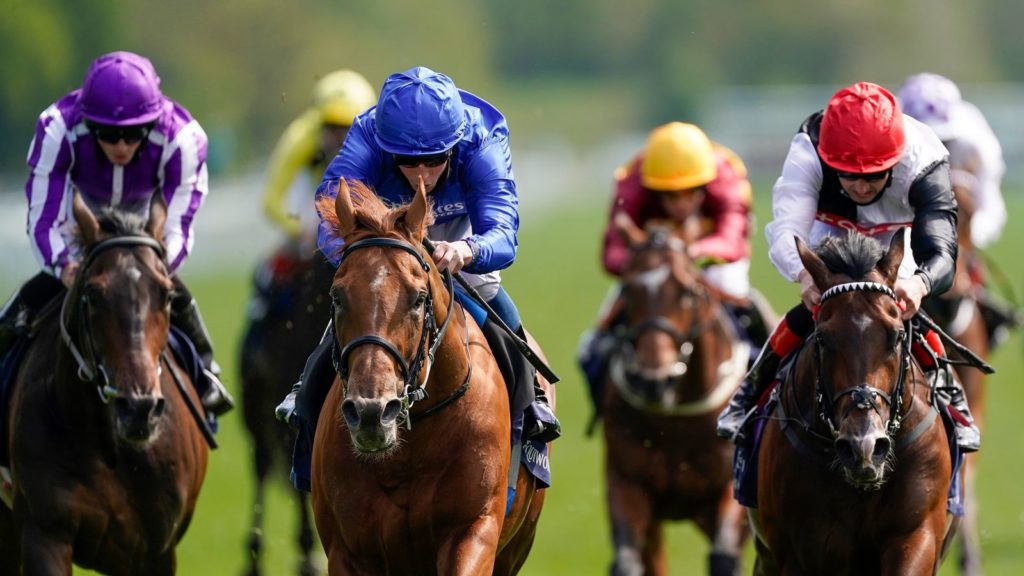
Hurricane Lane (blue silks) wins the Dante at York (Pic- Sky News)
By way of example, look at the three best sons of the peerless Frankel in the world today – 2022 Joint World Champion Hurricane Lane, winner of three G1s at 2400m, including the Irish Derby, has been sold as a National Hunt stallion; his equal Adayar who won the 2022 English Derby, could not find enough breeder support in England and has been sent off to Darley Japan.
And Westover, winner of the 2022 Irish Derby by 7 lengths has been sold to Japan for the same reason.
Hukum, who won Ascot’s showpiece the 2023 King George VI & Queen Elizabeth S. Gr.1 over 2400m by a nose over Westover has also been exported to Japan. The 2022 winner of the same race and triple Gr.1 winner Pyledriver has just been sold as a stallion for National Hunt.
How can stamina be regarded as the commercial kiss of death ? Japan’s gain is surely England’s loss.
In the 1950’s, post war South Africa was booming and breeders were able to buy stallions cheaply in Great Britain and we were in a golden age with more than a dozen 15 sons of Hyperion and Nearco imported for stud. Of course, the majority were laden with stamina.
High Veldt (1953), by Hyperion, won over 5 furlongs at 2years, progressed to show his best form at 12 furlongs and ran 2nd to Ribot in the King George VI & Queen Elizabeth S. Gr.1. Ranked 126 lbs by Timeform as a high class racehorse, he became champion sire of 2 year olds in South Africa as well as topping the General Sires List and sired winners over all distances including Elevation – another great horse, who won top division over 1000m, three Summer Cups over 2000m and the SA Derby over 2450m.
Other imported stallions like Preamble (6 wins, 1200m to 3200m), Herculaneum (3 wins, 2400m to 2800m inc the St Leger), Sun Compass (6 wins, 1000m to 2400m), Noble Chieftain (3 wins from 1000m to 3000m) and Wilwyn (21 wins from 1000m to 2400m), all become exceptional stallions capable of producing top class horses over all distances.
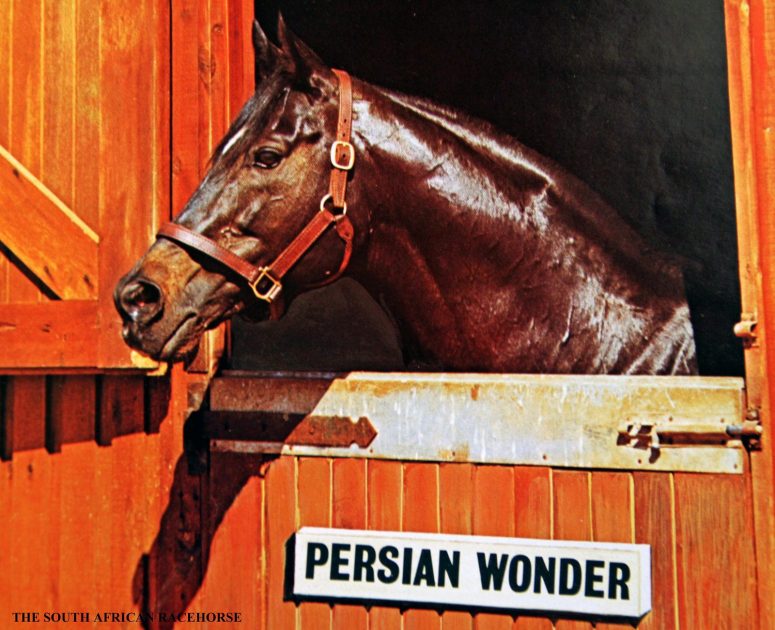
Persian Wonder (6 wins in England from 1200m to 2000m and stayed 2400m) and Jungle Cove (6 wins in USA from 1400m to 2600m) each led the SA Sires Championship 6 times.
Twenty years ago, Japan was a non-entity in global breeding, but now they have become a powerhouse, not just because of their focus on stamina with all its beneficial characteristics of soundness, toughness and durability, that allows their top horses to race until 6 and 7 years old, but also because of the way they have organised their industry and created fanatical fans.
When Equinox won, the attendance was 78,870 people, who came to witness a great horse in action, the best in the world.
In South Africa, it’s more than 10 years since our homebred horses were winning graded races in America, Dubai, Hong Kong, Singapore, Australia and New Zealand.
Our exports are down to trickle because of 12 years of AHS protocol suspension. We also have seen less than a trickle of stallions being imported, and none for the past 12 months until the recent arrival of Breeders Cup Mile winner Expert Eye.
If stamina stallions are discounted by Britain, it represents an opportunity for South Africa. When the French dual Gr.1 winner at 2400m Erupt (IRE) arrived in South Africa, it was said by more than one breeder that he was too stout for South Africa. And yet, the same comments were made when Silvano (GER) arrived but soon stopped when Silvano became 6 times Champion Sire.
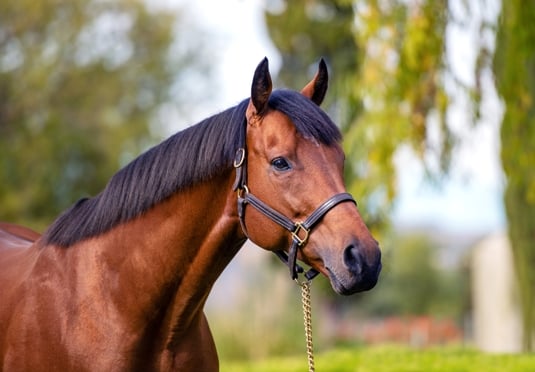
Erupt (photo: Jeremy Nelson)
Erupt only raced from 2000m to 2400m in Europe but in South Africa he is a sire of speed horses and with 3 crops in play, he has yet to sire even one foal that stays as far as 2400m.!
Again, the interplay for stamina and speed can be unpredictable. But one thing remains clear. In the quest to breed Great Champions, July winners, Met winners, Summer Cup and Triple Crown winners, both stamina AND speed are highly important components that cannot be dismissed by savvy breeders or their buyers.
- The author: Robin Bruss is a widely respected industry expert and a man with an encyclopaedic knowledge of horseracing and breeding. He has been involved with the sport all of his life, as a Gr1 winning owner and breeder, agent, auctioneer, journalist, television presenter, researcher, administrator and consultant.







